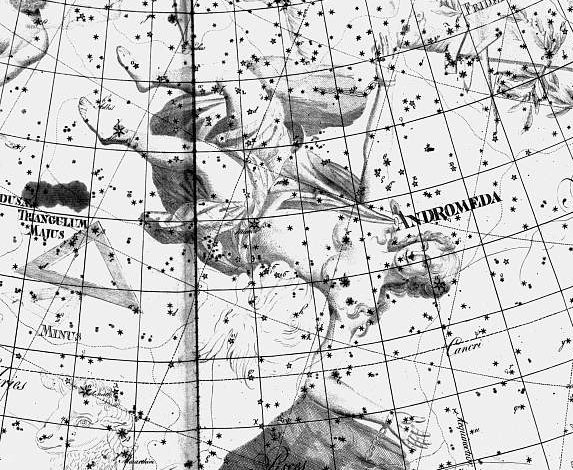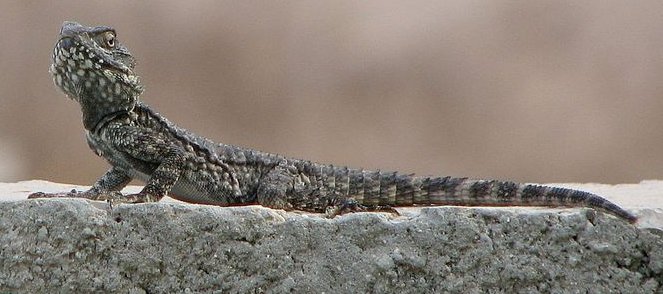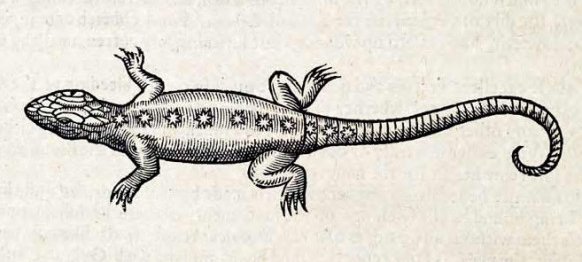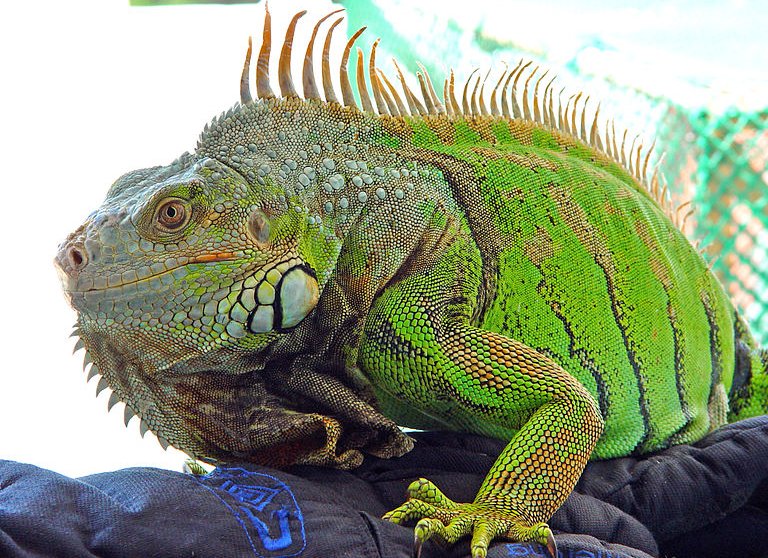5. Andromeda was chained to a rock and rocks we can see also in Bode's picture:
Which leads us to the stellion, a kind of lizard, who lives among the rocks:
"A stellion (Laudakia stellio), also known as a hardim or star lizard, is a species of agamid lizard found in Greece, Southwest Asia, and Northeast Africa. Like many agamas, stellions can change color to express their moods. They bask on stone walls, rocks and buildings, and also on trees. They are usually found in rocky habitats, and are quite shy, being very ready to dive into cracks to hide from potential predators. The name 'stellion' comes from Latin stellio, stēlio (stelliōn-, stēliōn-), which referred to any spotted lizard, from stella, star." (Wikipedia) There are 7 + 3 = 10 stars on the stellion in the drawing. And the number and the designs of the following rings (without any star) are worthy of studying, e.g. is number 20 of them drawn conspiciously broad. The first 2 of them have 'inside feathers', which makes them into a group with the preceding 3 starry rings, and 7 + 3 + 2 = 12. Allen delivers a necessary last piece of the puzzle needed for a full understanding: "Its inventor [of the Lacerta constellation, viz. Hevelius] gave it the alternative title of Stellio, the Stellion, a newt with star-like dorsal spots found along the Mediterranean coast. Somewhat coincidently its stars, with those in the eastern portion of Cygnus, were combined by the early Chinese in their Flying Serpent." But obviously it was no coincidence, we can recognize the Feathered Serpent. Snakes dwell underground and if they have feathers they certainly ought to be capable of crawling out and take to the sky, cfr the fate of the mother of Quetzalcoatl: ... the great high priest and monarch of the Golden Age in the Toltec city of Tula, the City of the Sun, in ancient Mexico, whose name, Quetzalcoatl, has been read to mean both 'the Feathered Serpent' and 'the Admirable Twin', and who was fair of face and white of beard, was the teacher of the arts to the people of pre-Columbian America, originator of the calendar, and their giver of maize. His virgin mother, Chimalman - the legend tells - had been one of the three sisters to whom God, the All-Father, had appeared one day under his form of Citlallatonac, 'the morning'. The other two had been struck by fright, but upon Chimalman God breathed and she conceived. She died, however, giving birth, and is now in heaven, where she is revered under the honourable name of 'the Precious Stone of Sacrifice', Chalchihuitzli ... I think the Polynesian moko corresponds to this type of serpent: ... When the man, Ulu, returned to his wife from his visit to the temple at Puueo, he said, 'I have heard the voice of the noble Mo'o, and he has told me that tonight, as soon as darkness draws over the sea and the fires of the volcano goddess, Pele, light the clouds over the crater of Mount Kilauea, the black cloth will cover my head. And when the breath has gone from my body and my spirit has departed to the realms of the dead, you are to bury my head carefully near our spring of running water. Plant my heart and entrails near the door of the house. My feet, legs, and arms, hide in the same manner. Then lie down upon the couch where the two of us have reposed so often, listen carefully throughout the night, and do not go forth before the sun has reddened the morning sky. If, in the silence of the night, you should hear noises as of falling leaves and flowers, and afterward as of heavy fruit dropping to the ground, you will know that my prayer has been granted: the life of our little boy will be saved.' And having said that, Ulu fell on his face and died ...
Maybe a moko is unable to fly (at least south of the equator) and then it can instead be depicted as a fat pregnant female. There are all sorts of lizards and some look like monsters:
|



